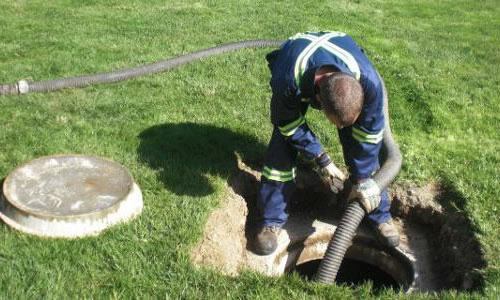Get It Safely Pumped Today
Get It Safely Pumped Today
When heavy rain moves through, the first thing most people notice is the standing water in the yard. What’s less obvious is what’s happening underground. The same rain that fills your gutters and ditches can also push groundwater into your drain field and slow down how your septic system works. Septic Pumping of Raleigh takes weather patterns seriously when inspecting and maintaining local systems. If you’ve ever wondered how rain and seasonal changes affect your septic system, keep reading to find out what to look for and when to call for service before bigger problems start.
A septic system depends on soil to complete the treatment process. After wastewater leaves the tank, it moves into the drain field, where soil filters and breaks down bacteria. When that soil stays soaked from heavy rain, it reaches a point where it can’t take in more water. Wastewater from showers and toilets has nowhere to go, and backups start. During long rainy periods, you may notice drains running slower or hear gurgles in the sink. The yard around your tank may feel soft or smell bad. These are signs that the drain field is too wet to process wastewater. Pumping the tank won’t fix a waterlogged field, but it can give the system some relief until the ground dries. Excess rain can also lift and move the soil, especially in older systems. This creates uneven spots that let surface water collect over the drain field, which keeps it wet longer. Good grading and regular maintenance prevent this from turning into a chronic issue.

Flooding is one of the worst conditions for a septic system. When floodwater covers the ground, it can enter the tank through the lids or plumbing vents. That water adds extra volume and stirs up solids, then sends debris into the outlet line. Once that happens, the drain field can clog quickly. If floodwater enters your yard, don’t use your plumbing until the water level drops below the top of your tank. Flushing or running water during a flood forces more liquid into an already overwhelmed system. That can push raw sewage to the surface or back into your house. After a flood, schedule a professional inspection. Even if the system seems to be working again, silt and debris may have entered the tank. In those cases, septic cleaning is the only way to reset the system safely. A full cleaning removes solids that heavy water flow may have stirred up. It’s also a chance to check for cracks or leaks caused by shifting soil.
Rain isn’t the only weather condition that affects septic systems. In summer, heat speeds up bacterial activity inside the tank, which helps break down solids efficiently. But extreme heat also causes faster evaporation at the surface, which sometimes leads to dry soil over the drain field. Dry soil can shrink and create small gaps that let untreated water move too quickly downward, which reduces filtration. In winter, the opposite problem occurs. Cold temperatures slow bacterial activity. If the system is underused or poorly insulated, parts of the line can freeze. Frozen pipes block the flow between the house and tank and causes backups indoors. Shallow systems or those with poor drainage are at higher risk. Snow and ice also change how surface water drains. When frozen ground starts to thaw, it can direct meltwater straight into the drain field. The sudden load of water mimics a rainstorm and soaks the soil. Keeping the area above your tank covered with grass and not compacted by vehicles helps buffer temperature swings and keeps the ground stable.
Preventive care is what separates a reliable septic system from one that fails after bad weather. The first step is regular septic tank pumping. When the tank is pumped on schedule, it has more room to handle incoming water during rainy weather. That extra space keeps solids from reaching the drain field. A service done at the right time can save thousands in future repairs. Septic tank cleaning is just as important, especially after flooding or long periods of heavy use. Cleaning fully removes sludge buildup and checks baffles and filters that keep solids in the tank where they belong. When those parts wear out or clog, no amount of pumping can protect the drain field. Before the rainy season, walk your property and look at the drainage pattern. If gutters or downspouts direct water toward the tank area, extend them farther away. After major storms, it’s a good idea to schedule a septic service to check for damage. A trained technician can spot small changes that may go unnoticed, like seepage along the tank seam or a damaged vent pipe. Early detection keeps those issues from growing into full system failures. A local septic company will know what weather patterns are most stressful for systems in your region and can recommend adjustments based on local conditions.
The weather in North Carolina can swing fast, from dry spells to sudden downpours. Stay ahead of the changes with proper care and professional help. Septic Pumping of Raleigh provides full septic service year-round. Whether you need routine septic tank pumping, flood recovery, or a full inspection after a storm, we can handle it all. If you’ve had heavy rain recently or your system has been due for attention, schedule septic tank cleaning or an inspection today.
Seasonal changes show how strong a home system really is. A cold snap can slow the flow inside the drainfield. A…
Homeowners in Raleigh put a lot of care into their homes, and Septic Pumping of Raleigh sees this every day. A…
Before most people think about breakfast, the crew at Septic Pumping of Raleigh is already on the move. A new day…
When your sinks start to drain slowly or you catch a sewage smell near the yard, it might be time for…